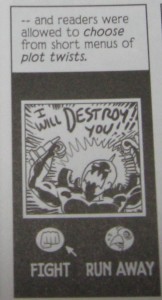Strip Search: Egyptology, McCloud, and Comics
Jennifer M. Babcock reviews and recommends comic strips available in print and on the web.
I am in the land of Egypt, the land of pyramids. Of course, I wrote this LAST Thursday when I wasn’t in Egypt but let’s pretend I already know what it’s like to be there.
Man, it is HOT here!
Anyway, as many of you already know, in addition to being a cartoonist, I am also studying Ancient Egyptian art history at the Institute of Fine Arts at New York University. There are a lot of people at my school that don’t see any connection between my interest in Egyptian art and cartooning – I think many people see me as quite the oddity. More perceptive people or people who have read Scott McCloud’s Understanding Comics completely understand why I’m interested in both. If you’ve read it, you’ll recall that McCloud lists Egyptian tomb paintings/reliefs as some of the first examples of “sequential art” or “comics.” He also uses Trajan’s column, prehistoric cave paintings, and the Bayeux Tapestry as “early comics” though, so I don’t know if Egyptian art’s narrative qualities necessarily drew me to that field. But if that’s the way people are best able to cope with me having two different interests, that’s fine.

